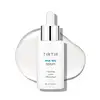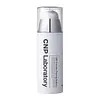What's inside
What's inside
 Key Ingredients
Key Ingredients

 Benefits
Benefits

 Concerns
Concerns

 Ingredients Side-by-side
Ingredients Side-by-side

Water
Skin ConditioningGluconolactone
Skin ConditioningC9-12 Alkane
SolventPropanediol
SolventButylene Glycol
Humectant1,2-Hexanediol
Skin ConditioningTromethamine
BufferingSodium Hydroxide
BufferingSodium Citrate
BufferingCitric Acid
BufferingEthylhexylglycerin
Skin ConditioningVaccinium Myrtillus Fruit Extract
Skin ConditioningAdenosine
Skin ConditioningDisodium EDTA
Saccharum Officinarum Extract
MoisturisingSqualane
EmollientCitrus Aurantium Dulcis Fruit Extract
MaskingCitrus Limon Fruit Extract
MaskingAcer Saccharum Extract
Skin ConditioningDioscorea Japonica Root Extract
Skin ConditioningCorchorus Olitorius Leaf Extract
Skin ConditioningNelumbo Nucifera Root Extract
Skin ConditioningHibiscus Esculentus Fruit Extract
Skin ConditioningAngelica Keiskei Extract
AntioxidantCapryloyl Salicylic Acid
ExfoliatingHippophae Rhamnoides Fruit Oil
Skin ProtectingWater, Gluconolactone, C9-12 Alkane, Propanediol, Butylene Glycol, 1,2-Hexanediol, Tromethamine, Sodium Hydroxide, Sodium Citrate, Citric Acid, Ethylhexylglycerin, Vaccinium Myrtillus Fruit Extract, Adenosine, Disodium EDTA, Saccharum Officinarum Extract, Squalane, Citrus Aurantium Dulcis Fruit Extract, Citrus Limon Fruit Extract, Acer Saccharum Extract, Dioscorea Japonica Root Extract, Corchorus Olitorius Leaf Extract, Nelumbo Nucifera Root Extract, Hibiscus Esculentus Fruit Extract, Angelica Keiskei Extract, Capryloyl Salicylic Acid, Hippophae Rhamnoides Fruit Oil
Water
Skin ConditioningGluconolactone
Skin ConditioningPropanediol
SolventArginine
MaskingDiethoxyethyl Succinate
SolventPanthenol
Skin ConditioningButylene Glycol
HumectantGlycerin
HumectantXanthan Gum
EmulsifyingAllantoin
Skin ConditioningPolyglyceryl-10 Laurate
Skin ConditioningPolyglyceryl-10 Myristate
Skin ConditioningTrametes Versicolor Extract
Polyglutamic Acid
Skin ConditioningCordyceps Sinensis Extract
Antioxidant1,2-Hexanediol
Skin ConditioningCitric Acid
BufferingPentylene Glycol
Skin ConditioningUrea
BufferingSodium Hydroxide
BufferingMaltose
MaskingFructose
HumectantSodium Hyaluronate
HumectantPelargonium Graveolens Flower Oil
MaskingBeta-Glucan
Skin ConditioningTrehalose
HumectantSodium PCA
HumectantSodium Lactate
BufferingSodium Chloride
MaskingSodium Citrate
BufferingGlucose
HumectantSodium Benzoate
MaskingPotassium Sorbate
PreservativeDisodium EDTA
Citronellol
PerfumingGeraniol
PerfumingWater, Gluconolactone, Propanediol, Arginine, Diethoxyethyl Succinate, Panthenol, Butylene Glycol, Glycerin, Xanthan Gum, Allantoin, Polyglyceryl-10 Laurate, Polyglyceryl-10 Myristate, Trametes Versicolor Extract, Polyglutamic Acid, Cordyceps Sinensis Extract, 1,2-Hexanediol, Citric Acid, Pentylene Glycol, Urea, Sodium Hydroxide, Maltose, Fructose, Sodium Hyaluronate, Pelargonium Graveolens Flower Oil, Beta-Glucan, Trehalose, Sodium PCA, Sodium Lactate, Sodium Chloride, Sodium Citrate, Glucose, Sodium Benzoate, Potassium Sorbate, Disodium EDTA, Citronellol, Geraniol
Ingredients Explained
These ingredients are found in both products.
Ingredients higher up in an ingredient list are typically present in a larger amount.
1,2-Hexanediol is a synthetic liquid and another multi-functional powerhouse.
It is a:
- Humectant, drawing moisture into the skin
- Emollient, helping to soften skin
- Solvent, dispersing and stabilizing formulas
- Preservative booster, enhancing the antimicrobial activity of other preservatives
Butylene Glycol (or BG) is used within cosmetic products for a few different reasons:
Overall, Butylene Glycol is a safe and well-rounded ingredient that works well with other ingredients.
Though this ingredient works well with most skin types, some people with sensitive skin may experience a reaction such as allergic rashes, closed comedones, or itchiness.
Learn more about Butylene GlycolCitric Acid is an alpha hydroxy acid (AHA) naturally found in citrus fruits like oranges, lemons, and limes.
Like other AHAs, citric acid can exfoliate skin by breaking down the bonds that hold dead skin cells together. This helps reveal smoother and brighter skin underneath.
However, this exfoliating effect only happens at high concentrations (20%) which can be hard to find in cosmetic products.
Due to this, citric acid is usually included in small amounts as a pH adjuster. This helps keep products slightly more acidic and compatible with skin's natural pH.
In skincare formulas, citric acid can:
While it can provide some skin benefits, research shows lactic acid and glycolic acid are generally more effective and less irritating exfoliants.
Most citric acid used in skincare today is made by fermenting sugars (usually from molasses). This synthetic version is identical to the natural citrus form but easier to stabilize and use in formulations.
Read more about some other popular AHA's here:
Learn more about Citric AcidDisodium EDTA plays a role in making products more stable by aiding other preservatives.
It is a chelating agent, meaning it neutralizes metal ions that may be found in a product.
Disodium EDTA is a salt of edetic acid and is found to be safe in cosmetic ingredients.
Learn more about Disodium EDTAGluconolactone is a PHA. PHAs are a great gentle alternative to traditional AHAs.
When applied, Gluconolactone has the same affect on skin as AHAs such as lactic acid. It helps dissolve the dead skin cells in the top layer of your skin. This improves texture and brightens the skin.
PHAs are more gentle than AHAs due to their larger structure. They do not penetrate as deeply as AHAs and take a longer time to dissolve dead cells. Studies show PHAs do not cause as much irritation.
Gluconolactone has some interesting properties:
In a 2004 study, Gluconolactone was found to prevent UV damage in mouse skin cells and has not been found to increase sun sensitivity. However, we still recommend wearing SPF daily.
This ingredient is is an created by reacting gluconic acid with an alcohol.
Learn more about GluconolactonePropanediol is an all-star ingredient. It softens, hydrates, and smooths the skin.
It’s often used to:
Propanediol is not likely to cause sensitivity and considered safe to use. It is derived from corn or petroleum with a clear color and no scent.
Learn more about PropanediolSodium Citrate is the sodium salts of citric acid. In skincare, it is used to alter pH levels and acts as a preservative.
Its main functions are to maintain the pH of a product and neutralize metal ions.
The acidity of our skin is maintained by our glands and skin biome; normal pH level of skin is slightly acidic (~4.75-5.5).
Being slightly acidic allows our skin to create an "acid mantle". This acid mantle is a thin barrier that protects our skin from bacteria and contaminants.
Learn more about Sodium CitrateSodium Hydroxide is also known as lye or caustic soda. It is used to adjust the pH of products; many ingredients require a specific pH to be effective.
In small amounts, sodium hydroxide is considered safe to use. However, large amounts may cause chemical burns due to its high alkaline.
Your skin has a natural pH and acid mantle. This acid mantle helps prevent harmful bacteria from breaking through. The acid mantle also helps keep your skin hydrated.
"Alkaline" refers to a high pH level. A low pH level would be considered acidic.
Learn more about Sodium HydroxideWater. It's the most common cosmetic ingredient of all. You'll usually see it at the top of ingredient lists, meaning that it makes up the largest part of the product.
So why is it so popular? Water most often acts as a solvent - this means that it helps dissolve other ingredients into the formulation.
You'll also recognize water as that liquid we all need to stay alive. If you see this, drink a glass of water. Stay hydrated!
Learn more about Water